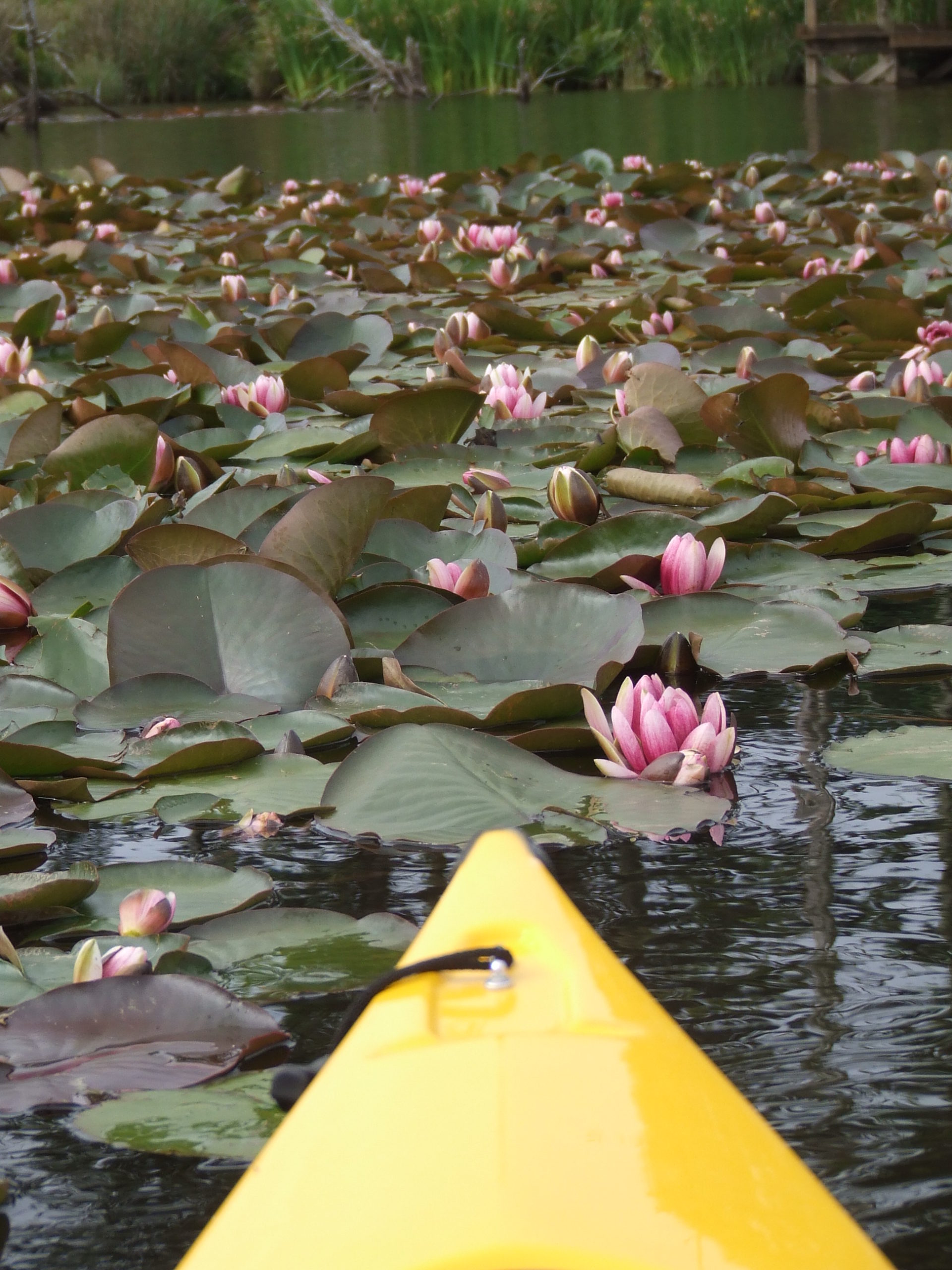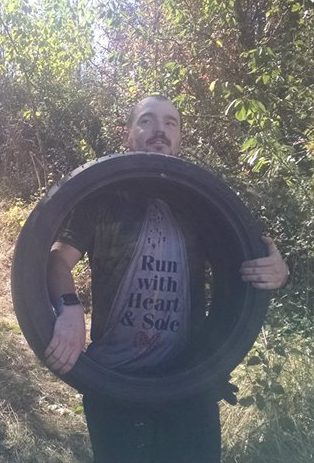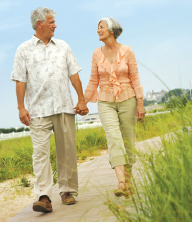
by Michelle | Jul 16, 2017 | Move Well
By Michelle Jenck, M.Ed., Coordinator, Tillamook County Year of Wellness
Cancer has touched almost everyone’s life in some way. Either we have personal experience or know someone who has battled the disease. I recently asked a group of high school students how large a role they thought genetics played in a person’s chances of getting cancer. Their answers ranged from 50-90%. While genetics do play a role, current research indicates that it is a much smaller percentage than previously thought.
It is currently estimated that genes account for up to 10% of our chances of getting cancer. What factors make up the other 90%? Something referred to as the “Environment.” This is more than the air we breathe and the water we drink. This refers to where we live, our lifestyle patterns, and our personal choices. There is a bit of good news here. We have the ability to prevent cancer more than we previously realized.
Besides avoiding tobacco use, we can reduce cancer risk by improving nutrition, increasing physical activity and reducing alcohol consumption. Coincidentally, these habits also lower our risk for heart disease, stroke and diabetes among other chronic health conditions. Another bonus is that these behaviors help us manage our weight.
Changing any habit can be difficult. One of the best places to start, is by increasing physical activity levels. This can help reduce stress and provide added motivation to tackle other health habits. The key is to start small, with something you enjoy and can see yourself doing over the long term.
Here are great ways to increase your physical activity:
- Take a daily walk or even get up and move around the house during TV commercials. If weather is a problem, try walking indoors at the Y, Fairgrounds Pavilion, or Fred Meyer.
- Find a walking or workout partner to help keep you accountable – ideally an immediate family member so that part of your “environment” can change with you!
- Join a fitness center like the YMCA or NCRD. Schedule a tour and take advantage of free consultation with staff who can help guide you in how to use the facility to meet your personal needs and goals
- Sign up for group fitness classes. This is a great way to meet people with similar interests. This also helps make regular activity part of your routine.
- Take small steps. For example: Next Tuesday, on my lunch hour, I will look up where Yoga classes are held and see if any classes fit my schedule. And, if you don’t find anything that works, google YouTube videos that you can follow from home during a time that does work for you. By chunking major lifestyle changes into small tasks, we increase our chances for successful and permanent transition to a new habit.
- Set SMART goals for yourself: Specific, Measurable, Achievable, Realistic and Time-bound. These can be very simple. I will walk for 15 minutes, Monday, Wednesday and Friday from 7:00-7:15 a.m.
- Get creative! A friend recently told me that she walked the track at the high school while going through her email in-box on her smart phone. Before she knew it, she had logged 6 miles! Now that is multi-tasking, albeit a little dangerous. The point is, it worked for her. What will work for you?
- Don’t give up. If something doesn’t work, then adjust your plan. There is never a perfect scenario. Life is a work in progress. It’s okay to do things differently from other people. Figure out what you can do now and continue to build from there.

by Guest | Jun 16, 2017 | Move Well
By Justin Mock, Wellness Coordinator, Adventist Health
After a long, rainy winter, we are all ready for some sunshine and outdoor activity. And one of the best places to do that is the beach. But before you dive into those icy blue depths, be sure to run through this safety checklist from Eric Swanson, Executive Director of Strategy and Business Development at Tillamook Regional Medical Center.
With 33 years of experience in emergency medical services and 28 years of experience in law enforcement, Eric has seen many summers on our Tillamook County beaches and knows what you need to watch out for and how to keep yourself safe.
Here are Eric’s six tips for a fun and safe time at the beach!
1. Don’t turn your back on the ocean
During a fun day at the beach, it can be easy to lose track of your surroundings. However, always be sure to keep an eye on the ocean to watch out for sneaker waves. A sneaker wave is a larger wave that occurs amid smaller waves, seeming to come out of nowhere. These waves can be dangerous and have the power to sweep you into the ocean.
2. Look out for logs
While driftwood may float and bob in the surf as if it weighs nothing at all, those logs can be massive and carry enough weight to cause serious injury or death. Stay away from logs in the surf or even on wet sand. It only takes a few inches of water to move or roll a several-ton log.
3. Keep the cold in mind
Even on a sunny day, the average Oregon Coast ocean temperature is 55°F or colder. In a matter of minutes, hypothermia can set in, causing even the strongest swimmer to drown. So if you plan to get in the water, play it safe and wear a wetsuit.
4. Save spelunking for another time
While Oregon’s beaches often have beautiful sand dunes, refrain from digging caves on the beach or dunes. Cave-ins can be very dangerous.
5. Careful on the cliffs
Oregon’s beaches have some of the most beautiful cliffs and shoreline along the west coast. Just remember, cliffs and shoreline are constantly shifting and moving, so always obey signs and keep a watchful eye.
6. Know how to ride out a rip current
Stronger than even the best swimmer, rip currents are dangerous currents of water that rush out to sea. If you become caught in a rip current, stay calm and swim parallel to the beach instead of swimming directly back towards it.
With these six tips in mind, you, your friends and family can have a safe time at the beach. Remember, a safe day is a fun day.

by Guest | Jun 5, 2017 | Move Well
The following information includes excerpts from the Water Trail Guides produced by the Tillamook Estuaries Partnership (TEP). Guides are available online at www.tbnep.org or by contacting TEP at 503-322-2222.
Every year, many people underestimate the power and danger of conditions on the water and are not adequately prepared for water recreation. Proper planning is essential for a safe and rewarding experience. Be knowledgeable about local weather, tides, and currents.
The rivers and bays in coastal Oregon are tidally influenced. Many areas drain to mud at low tide. As the tide goes out, the water moves rapidly, so plan to paddle during incoming and slack tides. Tide tables can be found at many local retail establishments as well as on-line.
Converging waterways can create treacherous conditions, especially when the wind is blowing. Heavy rainfalls and storms can bring fresh obstacles that change the character of rivers and bays. Downed trees in the water can be life threatening.
The water temperature is very cold, even in the summer months. Anticipate the chance of getting wet and dress accordingly. Dress in layers and consider wearing a wet or dry suit, booties and gloves. Be familiar with signs and symptoms of hypothermia.
If you are new to non-motorized boating, consider taking classes to improve your skills and knowledge. The Oregon State Marine Board offers a free online Paddlesports Safety Course. www.oregon.gov/OSMB
Help stop the spread of aquatic invasive species. Clean your boat/paddle board and gear thoroughly before transferring to a new water body. Drain, remove, and empty all compartments including areas that may trap mud and debris.
Water Safety Tips
- Consult a tide chart and wind report before scheduling your trip.
- Wear your life jacket
- Carry proper safety equipment
- Let someone know where you are going
- Paddle with a companion
- Never overestimate your skill level
- Scout for water hazards
- Never grab a stationary object while moving on swift water
- State clear of a motorboat’s path
- Position your kayak or paddleboard perpendicular to an approaching wake
- Wear a helmet when in whitewater conditions
- Dress adequately for the water temperature
- Obtain an Oregon Aquatic Invasive Species (AIS) permit, if needed
- Use public access (please stay off private land)
- Pack it in, pack it out
- Respect wildlife
Items to bring when kayaking:
- Life jacket
- Helmet
- Extra paddle
- Drinking water/food
- First Aid Kit
- Non-cotton clothes
- Map/compass/GPS
- Flashlight
- Rope
- Pocket Knife
- Bilge pump
- Sunscreen
- Dry bag
- Whistle
- Cell phone (coverage can be unreliable)
- Oregon AIS permit, if needed

by Guest | May 6, 2017 | Move Well
By Jeremy Mulcahy-Hill, Assistant Fitness Director, North County Recreation District
What if I told you that the benefits of exercise go beyond fitting into that pair of jeans you’ve been holding on to? Fitness has the ability to reshape our lives. From magazines, books, and blog posts the key emphasis is generally focused on the physical benefits. The ability to transform one’s body seems to have captured the attention of the world. The changes that exercise can invoke internally are seemingly second to those of external change.
During a workout not only does our body change, but so do our minds. We experience personal accomplishment on a daily basis through exercise. Whether it’s showing up to the gym, setting a new personal best, or trying a new movement you’ve been curious about. These little victories add up, turning the tide of whatever battle you might be dealing with. Stress, anxiety, and depression, the trifecta of misery.
This battle of mental mettle goes a bit deeper though. These small, confidence boosting wins for “team you” play a part in the bigger mental health picture. Physical fitness also helps us to increase things other than the size of our biceps. Our brain is one of our hardest working muscles and exercise puts it through its paces. Research has shown that over time exercise can be an effective treatment for major depressive disorder, also known as depression. With most treatment for this sometimes devastating disorder, the hippocampus is enlarged. This special little piece of our cognitive puzzle is the power house from which serotonin is released. Serotonin is a little chemical in our body that helps us have a feeling of satisfaction and fullness and which lowers anxiety and aggression. Cool, huh? On top of that, exercise increases chemicals released in our mood centers. Norepinephrine, commonly known as “the fight or flight” chemical, increases arousal, focus, and attention. Then there is Dopamine, our body’s way of rewarding us. This little guy helps drive motivation, enthusiasm, and focus. All of this means that exercise is a great first-course of action to defend against depression. We also know that it is a great addition to other interventions for more severe cases.
Bringing this package of life-changing potential together can start a chain reaction in our day-to-day lives. Small victories build to bigger wins. This helps to build up confidence, a cornerstone of positive self-talk. Add in our body’s chemical release mechanisms and you can begin to see the truly amazing way that exercise can change one’s life immensely. So, next time you’re feeling down, anxious, or stressed out, take a walk, go for a jog, hit the weights, or unwind with some yoga. Your body will thank you and you’ll feel all the better for it.

by Guest | Apr 5, 2017 | Move Well
By Nancy Kershaw, Family & Community Health and 4-H Youth Development Faculty
Oregon State University Extension Service/Tillamook County

Walking for me is a way to decompress and my thinking time. I walk everyday with my two Shelties, JP & Lefty. We are regular walkers at Happy Camp in Netarts. JP, Lefty and I walk an average of 3-5 miles every day. When time and the tide permits, we walk from Schooner Beach in Netarts to Oceanside (5 miles round trip). For shorter walks we start at Happy Camp and walk towards Oceanside. And on days the tide is high and the wind is blowing, we walk the neighborhoods of Netarts. For a change of scenery, we walk at Kilchis Point Reserve. The walk from the parking area to the bay is 2 miles roundtrip through the forest.
One of the reasons for walking is to keep your heart healthy. A personal anecdote that demonstrates this – this past year, both dogs had their annual check-ups by the veterinarian (both with different vets). Both vets commented on their strong, slow heartbeat, a sign of good physical fitness often associated with runners. Then I went for a colonoscopy and while the nurse was prepping me for the procedure she asked if I was a runner. I asked why and she commented that I had a runner’s heartbeat, slow and strong. I replied that I’m an avid walker.
According to the Walk with Ease program manual, walking offers many benefits for your body and spirit. Besides being inexpensive, convenient and fun, walking can help to:
- Strengthen the heart and lungs
- Nourish joints
- Build bones
- Fight osteoporosis
- Burn calories
- Control weight
- Reduce stress
- Improve mood
- Boost energy
Walking is safer and puts less stress on the body than most other forms of aerobic exercise – the kind that builds stamina and boosts cardiovascular fitness. It is an especially good exercise choice for people who are older or less active.
The current guidelines recommend at least 30 minutes of cardiovascular exercise five times a week – that’s only 150 minutes or 2 ½ hours of physical activity out of an entire week. Here’s a tip – if walking 30 minutes at a time is too much for you or you can’t find the time you could walk: 15 minutes twice a day, or even 10 minutes three times a day. Low or moderate intensity exertion allows you to speak comfortable, with huffing and puffing or being out of breath. You should be able to carry on a conversation. If you can’t carry on a conversation because you are short of breath or breathing too heavily, slow down.

Nancy Kershaw’s shelties, JP & Lefty
Need some incentive to walk? My dogs are my incentive to walk, they look at me longingly and nudge me with their noses if they haven’t had their walk. Studies show that dog owners tend to be more physically active than non-dog owners. If you don’t have a dog, how about walking with your neighbor, friend or kids?
Studies also show that setting goals and writing them down (making a contract) can be helpful. When settting goals be specific:
- State when you will walk and be specific. For example will you walk before breakfast, during your lunch break or immediately after work?
- State how often you will walk. At first aim for three times a week, if you do more that’s a bonus.
- Select a reward to celebrate a job well done. Name your reward on your contract.
- Refer to the contract every day. Post the contract where you’ll see it every day, such as on the fridge. The contract will help you stay focused and on track with your walking program.
Other tips for starting and maintaining a walking program:
- Research also shows that keeping records of your daily activity helps you make and maintain changes in your overall physical activity.
- Self-tests can be a great motivator to stick with a program because you can see how the program is making a difference. Self-tests are easy – measure the amount of time you’re able to walk, or the distance you’re able to walk, or take a physical measurement such as your heart rate. Do the self-test at the beginning of your program and then at regular intervals as you become more active.
If weather is a challenge, find a place out of the weather to walk – Y members can use the track above the gym, others might try walking at Fred Meyer, or consider walking through the Walk with Ease program in the fairgrounds on Monday, Wednesday & Friday, 10:30-11:30 am for walking (dress in layers since it is often colder in the exhibit hall than outside and enter through the Fair office). For more information about the YMCA call 503-842-YMCA. Call the OSU Extension Office, 503-842-3433, for more information about the Walk with Ease program.

by Guest | Apr 5, 2017 | Move Well
The path to good health through fitness can be a challenging but rewarding journey. But if you’re looking for a simple way to break into getting fit, look no further than your own two feet and the path outside your door.
Walking is an easy and accessible way for people of all ages to get fit. Depending on where you live, walking can even be the healthier alternative to places you normally drive, such as your job or the grocery store.
Walking regularly can help improve your mood, lower your blood glucose and blood pressure and make tasks, such as climbing stairs without feeling winded, much easier, says John Jakicic, PhD, a National Institutes of Health-funded researcher and director of the University of Pittsburgh’s Physical Activity and Weight Management Research Center. In the long run, Jakicic says walking can help reduce your risk of chronic conditions such as diabetes and heart disease.
“There are musculoskeletal benefits as well that result in less muscle soreness, greater mobility and the ability to better perform common daily tasks,” Jakicic says. “There is also a growing body of research that shows that regular activity such as walking can have a significant improvement on one’s cognitive ability, especially with aging.”
If you’re just starting out with a walking routine, aim to walk at a brisk pace for 10 minutes a day, with a goal of reaching 150 minutes of walking per week, Jakicic says. The more you walk, the more you should aim to have multiple 10-minute walks a day, or one longer walk, he says.
“Also, I would recommend that an individual engage in other lighter intensity walking throughout the day when given the opportunity,” Jakicic says. “We are learning more about the detrimental impact of prolonged sedentary activity, so taking a one- to two-minute walk every 30 to 60 minutes can reap health benefits in addition to the bouts that last for 10 minutes or longer.”
If you’re thinking about walking regularly for fitness, it’s important to make sure you’re physically ready. Check with your health care provider about your walking plans if you’ve had health issues related to physical activity, according to the National Institute of Diabetes and Digestive and Kidney Diseases.
Health issues to look out for before you start walking regularly may include pain in your shoulder or neck or feeling out of breath or dizzy. You should also let your doctor know if you are currently managing chronic conditions, such as asthma.
Remember to plan your walking route and share it with friends and family in case of an emergency, according to the institute. Buy a pair of shoes that are comfortable to walk in, Jakicic says. Also wear bright or reflective clothing when walking at night and try to walk with a friend or in a group.
“Walk in areas that are familiar and that you know are safe,” Jakicic says. “Be sure that these areas are well-lighted and have sidewalks for safety. When starting, do so in areas that are flat and as you get in better shape you can start to add a few gradual hills to help you to improve your fitness even more.”
If you use a cane or walker to walk, don’t leave home without it. If you have mobility issues, Jakicic suggests starting by walking up and down the street near your home in case you become fatigued.
“Also, start slowly and gradually move a bit faster as you complete your walk,” he says. “Starting slowly gives your muscles a chance to warm up.”
If you’re unable to walk outside or feel uncomfortable about doing so, get your walking minutes in indoors by moving in place, Jakicic says.
“Turn on the TV and walk during your favorite show, or while watching your favorite show, step in place during the commercials,” Jakicic says. “That will give you five to 10 minutes of activity every 30 minutes.”
Music can also be an inspiration while you walk, though be aware of your surroundings while using headphones, especially when crossing streets.
Walking while you work
You may spend the better part of eight hours sitting in a chair at your office, but there are easy ways to incorporate a walking program at your job. Try hosting a walking meeting instead of a sit-down one in a conference room, according to the Centers for Disease Control and Prevention. If possible, take the stairs instead of your building’s elevator. CDC also suggests taking a walking lunch break. You can also chart how far you walk throughout the day using a portable fitness tracker, such as a pedometer, to track the number of steps you took inside and outside your workplace.
For more tips on walking and your health, visit www.niddk.nih.gov
- Copyright The Nation’s Health, American Public Health Association








